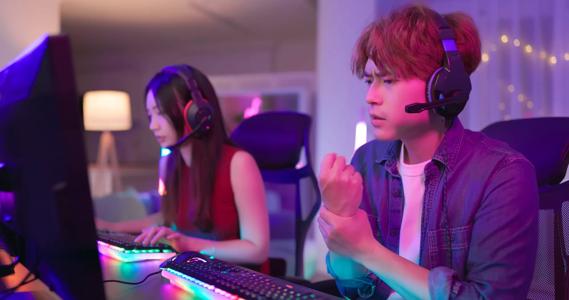A behind-the-scenes look at Cleveland Clinic’s role as medical services provider of the 2023 Summer Series

Above: Before a 2023 Summer Series match, Mark Gillett, MBBS, MSc, a consultant physician in sport and exercise medicine at Cleveland Clinic London and Chief Medical Officer of the Premier League (left), reviews the emergency action plan with team physician Richard Figler, MD, (center) and athletic trainer Edward Dobrowolski (right).
Advertisement
Cleveland Clinic is a non-profit academic medical center. Advertising on our site helps support our mission. We do not endorse non-Cleveland Clinic products or services. Policy
Cleveland Clinic was the exclusive medical services provider for the Premier League Summer Series, a two-week event in July 2023 that brought England’s elite soccer teams to the U.S. for a preseason tournament.
Six clubs played matches in five U.S. cities: Atlanta; outside New York City; Orlando, Florida; Philadelphia; and outside Washington, D.C. Cleveland Clinic sport and exercise medicine physicians and athletic trainers were embedded with each club, providing coverage during training sessions and matches and supporting the club’s own medical personnel. Cleveland Clinic physical therapists also were present at each venue, and Cleveland Clinic orthopaedic surgeons were on the sideline at each match.
“Most clubs brought their full medical staffs with them, including their physiotherapists — called ‘physios’ — and sports scientists,” says Cleveland Clinic’s Director of Sport and Exercise Medicine, Sami Rifat, MD, who served as the tour team physician for Newcastle United FC (Football Club). “We worked side by side with our colleagues from the U.K., providing coverage, lending an extra pair of hands and acting as a liaison to local care whenever needed.”
Dr. Rifat and Cleveland Clinic orthopaedic surgeon Paul Saluan, MD, served as co-medical directors of the event, which required coordinating all medical services and creating emergency action plans for each club at each training site and match venue — about 25 plans in all. Each one involved procuring equipment specified by the league, establishing connections with local physicians, coordinating ambulance and paramedic services, and determining where athletes would be transported in case of a severe musculoskeletal injury or cardiovascular event, for example.
Advertisement
“It was a huge undertaking,” says Dr. Saluan. “I learned quite a bit about how different cities handle large-scale sporting events. All sports teams have emergency action plans, but usually only for their one home facility. We had to design plans from scratch for English soccer teams playing in U.S. football stadiums, where they had never played before.”
That’s where years of experience, networking and collaboration were especially valuable.
“If a player needed a specialty evaluation, we could make it happen,” says Dr. Rifat. “I’ve been fortunate that in my years as a team physician, I’ve had the opportunity to network with colleagues across the country and world. Those connections proved invaluable throughout the Summer Series.”
While Cleveland Clinic physicians serve a variety of elite U.S. sports teams, working with the Premier League was a unique honor, says Dr. Rifat.
“Many of the top-ranked soccer players in the world play in the English Premier League,” he says. “Getting to stand ‘on the pitch’ with these clubs, and learning how they operate and manage practice, rehabilitation and analytics was fascinating.”
Sport and exercise medicine physician Kelly Estes, MD, served as the tour’s team physician for Fulham FC. Once an NCAA soccer player herself, Dr. Estes today is a physician for U.S. Ski & Snowboard.
“This was my first longer-term coverage as the primary physician of an elite athletic team — as well as the first requiring nearly two weeks of travel,” says Dr. Estes. “The travel component was the most challenging because we had to adjust to new resources and equipment at each location. We had to learn a different emergency action plan for each site.”
Advertisement
Other challenges involved language barriers with her players (many who spoke Spanish) and coaches (who spoke Portuguese). (“We sometimes needed to communicate in very basic English.”) Another challenge was the high summer temperatures, significantly hotter than players were used to in the U.K. (“We had to monitor temperature and consider safety precautions.”) Also, the team was accustomed to certain medications and other resources in England that were not available in the U.S.
“I learned so much from the physios, including how they screen new players for the club and what types of treatments they provide,” says Dr. Estes. “We enjoyed exchanging practice insights and continue to communicate with each other.”
But there were more similarities than differences between U.S. and U.K. medical care.
“Although we work on different continents, we provide very similar care, focusing on coordinating care for the athletes, ensuring their safety from things like the blistering heat in Philadelphia while they were here, and keeping them competing at their highest level for as long as possible,” says Richard Figler, MD, the lead primary care sports medicine physician for the Cleveland Cavaliers, who worked with Chelsea FC during the Summer Series. “Premier League athletes are very similar and have the same needs as the elite athletes we care for here in Cleveland.”
Even the injuries were familiar.
“Soft-tissue injuries, such as muscle strains, are the most common type of injury for Premier League players, which is similar to the injuries we encounter in North America,” says Dr. Rifat.
Advertisement
Seeing how injuries were managed by the clubs’ U.K. medical teams and how players were rehabilitated and returned to play was enlightening, he adds, noting that the specifics are exclusive to each team and often unshared.
“The international exchange of knowledge and ideas will only make our practice in the U.S. better,” says Dr. Rifat. “My Premier League experience will benefit the athletes I work with at home every day. When a youth or high school soccer player learns that I cared for some of the best players in the world, they feel more comfortable. It builds rapport and immediately establishes trust that I can take care of them too.”
Advertisement
Advertisement

Research by Cleveland Clinic and Sports Data Labs to improve health and function in everyday patients as well as elite athletes

Rest is often not the best care for gamers’ overuse injuries

Systematic review of MOON cohorts demonstrates a need for sex-specific rehab protocols

Clinical complexity demands personalized care strategies

Cleveland Clinic’s Esports Medicine team weighs in on importance of multidisciplinary care

Gamers are athletes who can benefit from athletic training

Criteria-based diagnosis of traumatic encephalopathy syndrome predicts changes in brain volumes and cognition

Should surgeons forgo posterior and lateral approaches?